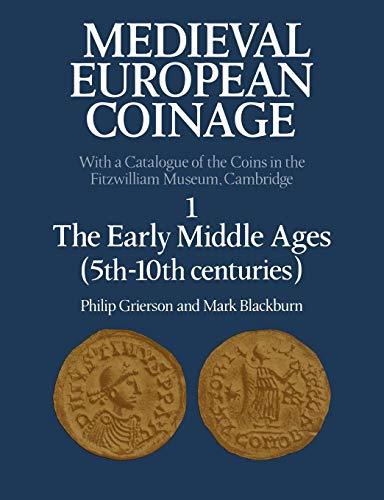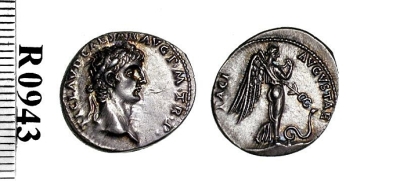Somewhat to my surprise, I have now reached the second of the what-was-going-in-my-life round-ups I was promising to use as the anchor of the new blogging programme here at A Corner of Tenth-Century Europe, back in, er, February. It wasn’t supposed to take eight months to record what had happened in three, but as you’ll have observed there was a fair bit of hiatus and strife in there, and I hope that we can pick things up a bit now. There’s only one way to find out, anyway, and thus we now reach the point where I try and give some impression of my first semester employed at the University of Leeds. The first thing that needs to be said about that is that my new colleagues were absolutely lovely, and guided me through new offices and routines with cheerful generosity; it all unrolled a great deal more easily than it could so easily have done while I found my feet. To try and explain what I was actually up to, however, probably needs breaking down into headings, and the obvious ones would be teaching, what we might generally class as extra labours, seminars and similar, research work and, lastly, life more widely; I’ll say the least about the last, but it holds the rest together. So here we go. Continue reading
Recent Comments
See something wrong?
I know my recall isn't perfect, and I'm always anxious to correct mistakes and happy to acknowledge them. If you think a correction is necessary or appropriate, please leave a comment or contact me by e-mail.Blogroll
- Aardvarchaeology
- African History Extra
- Anglo-Saxon Archaeology Blog
- Antiquarian’s Attic
- archaeodeath
- Archaeology in Europe
- Bàsicament Romànic
- Beachcombing's Bizarre History
- Blogenspiel
- Book and Sword: pontifex minimus
- Byzantine Blog
- Castells catalans
- Cathalaunia. La Catalunya abans de Catalunya
- Clas Merdin: Tales from the Enchanted Island
- Coffee with Clio
- Colleen Morgan
- Dame Eleanor Hull
- El Romànic de Catalunya
- Gemæcca
- Gladly Lerne, Gladly Teche
- Going Medieval
- Hispania de los Vikingos
- History for Atheists
- Knighthood and Learning
- Lingwë – Musings of a Fish
- Magistra et mater
- Maresme Medieval
- Material Culture
- Medieval and Earlier Manuscripts Blog
- Medieval Histories
- Medieval History Geek
- Muhlberger's World History
- NOSAS Archaeology Blog
- Not of General Interest
- Pallia
- Senchus
- stuff'n other stuff
- stuff, geeky stuff
- The Heroic Age
- The Historian's Sketchpad
- The Last Word on Nothing (*)
- The Lost Fort
- Viking Archaeology Blog
- Viking Metal
Currently reading...
- Alvaro Carvajal Castro, Bajo el máscara del regnum
- David Graeber, Debt
- John Hudson & Ana Rodríguez (edd.), Diverging Paths?
- John Hudson & Sally Crumplin (edd.), The Making of Europe: Essays in Honour of Robert Bartlett
- Kevin Butcher (ed.), Debasement
- Ulrike Green and Kevin Costion (edd.), Modeling Cross-Cultural Interaction in Ancient Borderlands
Currently teaching...
Institutions
Medieval tourism pictures
- Ankara
- Appleby and Pendragon Castles
- Beaulieu-sur-Mer
- Bolton Abbey Priory
- Bridgnorth
- Brixworth, church of All Saints
- Cambridge
- Carlisle 1
- Carlisle 2
- Castelmola, Sicily
- Castercliff hillfort
- Chillon castle
- China
- Claverley Church
- Cuxham and Watlington churches, Oxfordshire
- Dudley Priory
- Gairloch & Sands, Wester Ross, Scotland
- Geneva part one
- Geneva part two
- Glastonbury: town and abbey
- Halifax
- Iffley Church, nr. Oxford
- In Marca Hispanica, trips One through Seven
- India
- Istanbul
- Kirkstall Abbey
- Lastingham church
- Lausanne Cathedral
- Leeds
- Lichfield Cathedral and surrounds
- Lleida
- Madrid
- Maldon (Essex), Sutton Hoo (Suffolk) and Ely (Cambridgeshire) in one day
- Naples, part one
- Nice, France
- Oxford Castle
- Paris Itself
- Paris to Siena by train
- Rome seen by an (early) medievalist
- Roquebrune-Cap-Martin, South France
- Rye, West Sussex
- Sarratt, Hertfordshire
- Shrewsbury
- Siena and Florence
- Skipton Castle
- Taormina, Sicily
- The Cloisters, New York City
- Venice and Ravenna
- Vienna
- Villefranche-sur-Mer
- Whitby Abbey and St Mary's Whitby
- York Minster
Now working on...
Personal webpages
Resources
- About: Medieval History
- ARCHIM: ARChives nationales, IMages de documents
- Association for History and Computing
- Beowulf Basics, by Michael Drout
- Bibliography on evaluating web information
- Book of Kells Online
- Carolingian Treasures: a political and cultural Renaissance
- Castros de Asturias
- Catalogue of Digitized Medieval Manuscripts
- Christianization and the Rise of Christian Monarchy
- Cliopatria: a group blog
- Collaborative Hincmar Project blog
- Collection Gallica @ Bibliothèque Nationale de France
- Department of Coins and Medals, Fitzwilliam Museum
- EMAP – Early Medieval Archaeology Project (Ireland)
- Full-text resources for 'Dark Age' history
- Global Middle Ages: portal
- Glossa: a Latin dictionary
- Gmail Privacy FAQ
- Història del Paisatge
- Histeria de España
- History of Medieval & Renaissance Europe: Primary Documents
- IMAREAL's image server
- Index of Christian Art
- Interactive Album of Mediaeval Palaeography
- Kornbluth Photography archive
- Late Antique and Early Medieval Inscriptions
- Library of Iberian Resources Online
- Material Culture for Historians Powerpoint presentation
- Medieval Calendar Calculator
- Medieval Writing
- MedievalEuropeOnline
- Monastic Matrix
- Online Medieval & Classical Library
- Online palæography exercises
- Open Humanities Press
- OpenEdition
- Paul Halsall’s Internet Sourcebooks home-page
- Professor Martha Carlin's Homepage
- Regesta Imperii
- Regnum Francorum Online – interactive maps of early medieval Europe 614-840
- Revistas Científicas del Consejo Superior de Investigaciones Científicas (Edición electrónica)
- Special Characters in HTML
- St Gall Monastery Plan
- Tattúínárdøla Saga
- Telma : Chartes originales antérieures à 1121 conservées en France
- The Age of Datini
- The Book of Deer Project
- The Digital Monumenta Germaniae Historica
- The Illustrated Isidore
- The Labyrinth: resources for medieval studies
- The Latin Library at Ad Fontes Academy
- The Making of Charlemagne's Europe
- The Online Reference Book for Medieval Studies
- Web Gallery of Art
- William Whitaker’s Words (Latin translation tool)
Archives
- May 2024
- April 2024
- January 2024
- December 2023
- November 2023
- October 2023
- September 2023
- August 2023
- July 2023
- June 2023
- May 2023
- April 2023
- March 2023
- February 2023
- January 2023
- December 2022
- November 2022
- October 2022
- September 2022
- August 2022
- July 2022
- June 2022
- May 2022
- April 2022
- March 2022
- February 2022
- January 2022
- December 2021
- November 2021
- October 2021
- September 2021
- August 2021
- July 2021
- June 2021
- May 2021
- April 2021
- January 2021
- December 2020
- November 2020
- October 2020
- September 2020
- August 2020
- July 2020
- June 2020
- May 2020
- April 2020
- March 2020
- February 2020
- January 2020
- December 2019
- November 2019
- October 2019
- September 2019
- August 2019
- July 2019
- June 2019
- May 2019
- April 2019
- March 2019
- February 2019
- January 2019
- December 2018
- November 2018
- October 2018
- September 2018
- August 2018
- July 2018
- May 2018
- March 2018
- February 2018
- January 2018
- December 2017
- December 2016
- October 2016
- September 2016
- August 2016
- July 2016
- June 2016
- May 2016
- April 2016
- March 2016
- February 2016
- January 2016
- December 2015
- November 2015
- October 2015
- September 2015
- August 2015
- July 2015
- June 2015
- March 2015
- February 2015
- January 2015
- December 2014
- November 2014
- October 2014
- September 2014
- August 2014
- July 2014
- June 2014
- May 2014
- April 2014
- March 2014
- February 2014
- January 2014
- December 2013
- November 2013
- October 2013
- September 2013
- August 2013
- July 2013
- June 2013
- May 2013
- April 2013
- March 2013
- February 2013
- January 2013
- December 2012
- November 2012
- October 2012
- September 2012
- August 2012
- July 2012
- June 2012
- May 2012
- April 2012
- March 2012
- February 2012
- January 2012
- December 2011
- November 2011
- October 2011
- September 2011
- August 2011
- July 2011
- June 2011
- May 2011
- April 2011
- March 2011
- February 2011
- January 2011
- December 2010
- November 2010
- October 2010
- September 2010
- August 2010
- July 2010
- June 2010
- May 2010
- April 2010
- March 2010
- February 2010
- January 2010
- December 2009
- November 2009
- October 2009
- September 2009
- August 2009
- July 2009
- June 2009
- May 2009
- April 2009
- March 2009
- February 2009
- January 2009
- December 2008
- November 2008
- October 2008
- September 2008
- August 2008
- July 2008
- June 2008
- May 2008
- April 2008
- March 2008
- February 2008
- January 2008
- December 2007
- November 2007
- October 2007
- September 2007
- August 2007
- July 2007
- June 2007
- May 2007
- April 2007
- March 2007
- February 2007
- January 2007
- December 2006
-
Join 952 other subscribers
RSS feed












